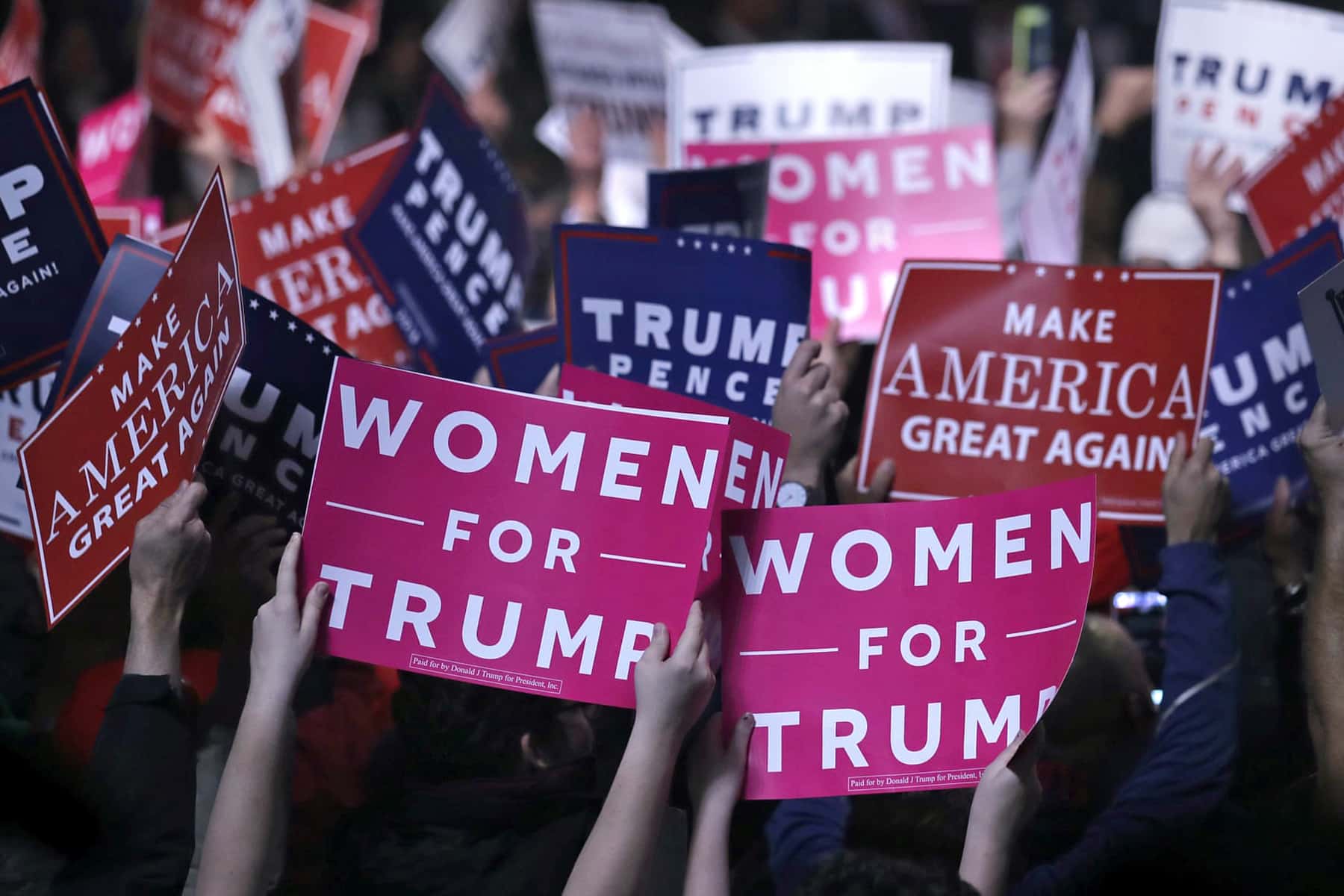
Some 53% of white women voted for Donald Trump in the 2016 presidential election – the real story of white women voters is both more grim and more complex than the figure reveals.
For the past two years, the American left has been haunted by a number: 53. It is the percentage of white women who voted for Donald Trump in the 2016 presidential election.
In the sectors of the left where the figure and its implications have become a perennial theme, the number is treated both as disappointing and darkly unsurprising, a reflection of the conventional wisdom that white women would rather choose the racism espoused by the Republican party than join in the moral coalition represented by men of color and other women. On the left, this number can elicit exasperation, rage, and even suspicions about the moral legitimacy of the feminist project.
It casts doubts on the political convictions of liberal white women, colors leftist perception of female-coded liberal political projects like the Women’s March, and has prompted long-overdue calls for increased political leadership by women of color.
The real story of white women voters is both more grim and more complex than the 53% figure reveals. The truth is that the 53% of white women who voted for Trump in the last presidential election was actually an improvement on even worse numbers from previous cycles. White women supported Mitt Romney at 56% in 2012, and supported George W Bush by 55% in 2004.
Even these robust showings by Republican white women were down from their previous highs: Ronald Reagan won a staggering 62% of white women in 1984. All of these totals were lower than those for white men, who continue to support Republicans at alarming rates, but they were solid majorities nonetheless.
Preliminary results from the midterm elections seem to suggest that the trend is continuing, with Republican candidates slowly losing the support of suburban white women across the country. According to the Wall Street Journal, white women’s overall support for Republicans slipped from the infamous 53% in 2016 down to 50% in 2018. CNN’s polling places white women’s support for Republicans just lower, at 49%. As the Republican party has shifted its rhetoric away from drab Romneyite fiscal conservatism and towards the sadistic racism that is Donald Trump’s stock and trade, there is some evidence that growing numbers of white women are turning away, repulsed.
This shift makes white women at once one of the largest voting blocs in the nation and also one of its most divided, least ideologically coherent demographics. No other race and gender group is so split. There is a battle on for the soul of America, between the peevish, racist cruelty of Trump and his supporters and a vision of inclusion, justice, and decency forwarded by an increasingly diverse coalition on the left. Much of that battle is being waged in white women’s hearts, with the left hoping that more and more of them will break with their historical loyalty to white supremacy and embrace a kinder, more sustainable model for the future.
But white women are not leaving the Republican party as fast as one might hope. If some white women are defecting from their traditional Republican loyalties, others – half – are staying. The trend of white women’s shift to the Democratic party, while real, also seems to be happening much more slowly than the most hopeful analyses predicted. Last month the New York Times ran a story on what it claimed was widespread support for the Democratic Texas Senate hopeful Beto O’Rourke among white evangelical women.
The story contained accounts by white women who were disgusted by the Trump administration’s internment of refugee children at the border, and who had resolved to vote for Democrats. It suggested that the support of these white women could be decisive for Democrats hoping to make gains in a changing southern state. Instead, white women in Texas supported O’Rourke’s Republican opponent, Ted Cruz, by 59%.
What is wrong with white women? Why do half of them so consistently vote for Republicans, even as the Republican party morphs into a monstrously ugly organization that is increasingly indistinguishable from a hate group?
The most likely answer seems to be that white women vote for Republicans for the same reason that white men do: because they are racist. Trump, with his raucous rallies and his bloviating, combative style, has offered his supporters an opportunity to savor the pleasures of being cruel. It is likely that the white women who voted for him in 2016, and who will vote for him again in 2020, find this racist sadism gratifying. It is fun for them.
But there is something else at play, something more complicated, in white women’s relationship to white patriarchy. White women’s identity places them in a curious position at the intersection of two vectors of privilege and oppression: they are granted structural power by their race, but excluded from it by their sex. In a political system where racism and sexism are both so deeply ingrained, white women must choose to be loyal to either the more powerful aspect of their identity, their race, or to the less powerful, their sex. Some Republican white women might lean into racism not only for racism’s sake, but also as a means of avoiding or denying the realities of how sexist oppression makes them vulnerable.
In her book “Right Wing Women,” the feminist Andrea Dworkin wrote that conservative women often conform to the dominant ideologies of the men around them as part of a subconscious survival strategy, hoping that their conservatism will spare them from male hatred and violence. It doesn’t work, she says. They suffer sexist oppression anyway. But the strategy continues.
“Most women cannot afford, either materially or psychologically, to recognize that whatever burnt offerings of obedience they bring to beg protection will not appease the angry little gods around them.”
Participating in racism does not exempt white women from sexism, as much as they might hope that it will. It merely corrodes their souls in the process.
Some of this persistent sexism can be seen in the Trump camp’s treatment of the white women who have interfered with their consolidation of power. It is there in the chants of “Lock her up” that still punctuate Trump’s rallies; it was seen in the mocking and hounding of Dr Christine Blasey Ford, and in the theatrical sexism that Brett Kavanaugh displayed at his confirmation hearing. It was there in Trump’s continued relationship with Rob Porter, the wife-beating White House aide whom the president continued to call even after pictures of his wife’s swollen, battered face were made public.
White women who continue to vote Republican have thrown these other white women under the bus, along with the millions of non-white women who have been made to suffer under Republican administrations – those who have had their water poisoned, their right to vote eroded, their children confiscated and caged at the border, or killed by police with impunity. Writing of the immoral bargain struck by rightwing women, Dworkin says: “In effect, she ransoms the remains of a life … by promising indifference to the fate of other women.”
Moira Donegan
Charles Krupa
Originally published on The Guardian as Half of white women continue to vote Republican. What’s wrong with them?
Help deliver the independent journalism that the world needs, make a contribution of support to The Guardian.














